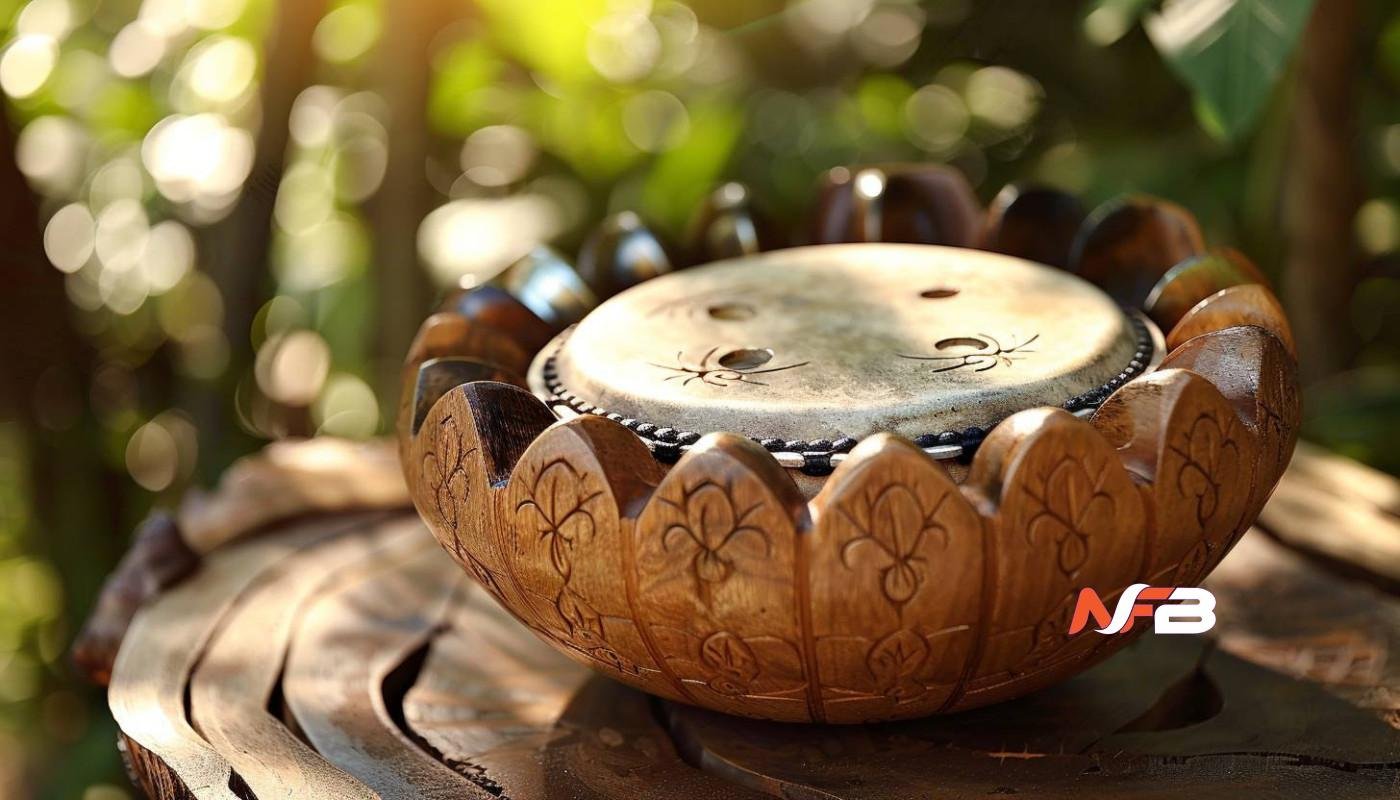Tongue drums are unique and captivating musical instruments known for their soothing and melodic tones. They belong to the percussion family and are often called steel tongue drums because of their primary material—steel. These drums have a round, hollow body with tongues or slits cut into their surface, each tongue corresponding to a specific note. The origins of tongue drums can be traced back to ancient slit drums, which were carved from hollowed-out logs and played in various cultures for communication, rituals, and music. Modern tongue drums, however, are a refined version, blending traditional craftsmanship with contemporary innovation. They are widely used in meditation, relaxation, and even music therapy due to their tranquil and harmonious sounds. These drums have gained popularity not just among musicians but also among those looking for an accessible way to express creativity and find calmness in their daily lives.
How Do Tongue Drums Work?
Tongue drums work by producing sound when the tongues, which are cut into the drum’s surface, are struck with either hands or mallets. The size, shape, and placement of each tongue determine the specific note it produces. When a tongue is struck, it vibrates, and the hollow body of the drum amplifies the vibration, creating a resonant, melodic tone. The material of the drum, typically steel or wood, also influences the quality of the sound, with steel offering a clear, ringing tone and wood providing a softer, earthy resonance. Each tongue drum is usually tuned to a specific scale, making it easy to create harmonious melodies regardless of musical experience. This simplicity in design and functionality makes tongue drums versatile and approachable instruments for everyone, from beginners to seasoned musicians.
Different Types of Tongue Drums
Tongue drums come in various types, primarily categorized by the material used in their construction. Steel tongue drums are the most common and offer a crisp, melodic sound that resonates beautifully, making them ideal for meditation, sound therapy, and music performances. Wooden tongue drums, on the other hand, have a warm, organic tone that suits traditional and acoustic settings. Within these categories, tongue drums can also differ in size, with larger drums producing deeper tones and smaller ones offering higher-pitched sounds. Some are tuned to diatonic scales, while others use pentatonic scales, allowing players to choose based on their musical preferences. These variations give players the flexibility to select a tongue drum that aligns with their style and intended use.
How to Play a Tongue Drum
Playing a tongue drum is a simple and joyful experience, requiring no prior musical training. Players can use their hands or mallets to strike the tongues, creating melodic and rhythmic patterns. Using hands produces a softer and more personal tone, while mallets deliver clearer, louder sounds. Beginners often start by experimenting with different notes to understand the drum’s tonal possibilities. Over time, they can develop techniques like rolling, which involves striking notes rapidly for a continuous sound, or playing scales to create flowing melodies. Many tongue drums are tuned to specific scales, so it’s easy to produce harmonious sounds without worrying about hitting the wrong note. This intuitive nature makes tongue drums accessible to everyone, from children to professional musicians.
Benefits of Playing Tongue Drums
Playing tongue drums offers a range of benefits that go beyond musical enjoyment. Their calming and melodic tones make them ideal for meditation and relaxation, helping to reduce stress and enhance mindfulness. Many therapists use tongue drums in sound therapy to promote emotional well-being and mental clarity. They are also highly portable and simple to play, making them a great tool for fostering creativity and self-expression, regardless of age or skill level. Additionally, the tactile act of playing a tongue drum can improve hand coordination and motor skills, offering both mental and physical benefits. Whether used for personal enjoyment or as a therapeutic instrument, tongue drums provide a unique way to connect with music and oneself.
Choosing the Right Tongue Drum
Selecting the right tongue drum involves considering factors like size, material, and tuning. Larger drums typically produce deeper, richer tones, while smaller ones create lighter, higher-pitched sounds. Material is another important factor; steel drums are durable and versatile, while wooden drums offer a natural, warm sound. Tuning is crucial, as it determines the scale and mood of the melodies you can create. Beginners often opt for pentatonic scales because they are harmonious and forgiving, while experienced players might prefer diatonic or custom-tuned drums. Budget and portability also play a role, with compact models being ideal for travel. Researching and testing different options ensures you find a tongue drum that suits your preferences and goals.
Caring for Your Tongue Drum
Proper care is essential to maintain the sound quality and appearance of your tongue drum. For steel drums, keeping them clean and dry is crucial to prevent rust. Wiping the drum with a soft, dry cloth after playing removes moisture and oils from your hands. Applying a thin layer of oil occasionally can further protect the surface. Wooden drums, meanwhile, should be stored in a dry environment to avoid warping. Regular tuning may be needed to keep the notes in perfect harmony, and any repairs should be handled by professionals to preserve the drum’s integrity. With proper care, a tongue drum can remain a cherished instrument for years to come.
Fazit
Tongue drums are versatile, intuitive, and deeply rewarding instruments that offer both musical and therapeutic benefits. Whether you’re a beginner exploring melodies or an experienced musician seeking a calming addition to your collection, tongue drums provide an accessible and enriching way to create beautiful sounds. By understanding how they work, exploring different types, and learning how to play and care for them, you can unlock the full potential of this unique instrument. Investing in a tongue drum is not just a step toward musical discovery—it’s a journey into relaxation, creativity, and joy.















Leave a Reply